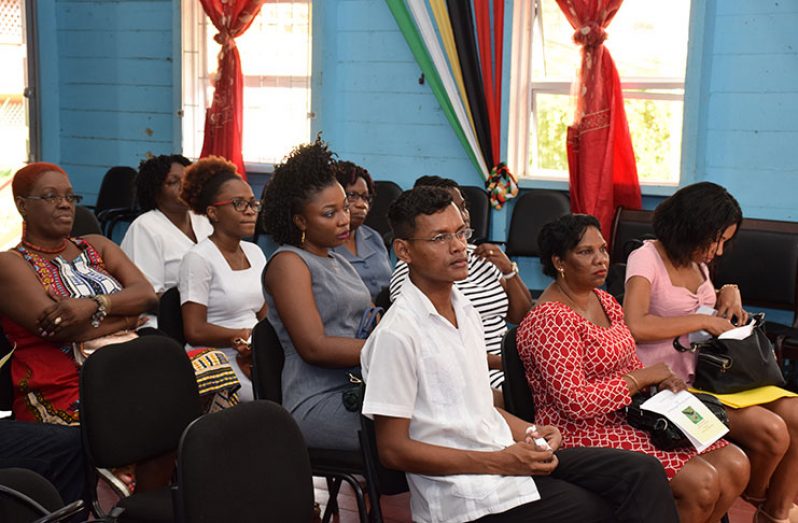–as gov’t continues to grapple with control, stigma
ALTHOUGH the prevalence of leprosy has seen a significant decline worldwide, it’s still somewhat of an uphill battle for Guyana, with the latest recorded count of persons infected with the disease being 54. This is according to Minister within the Ministry of Public Health, Dr. Karen Cummings, who made the observation on Sunday during a presentation at the Palms to mark World Leprosy Day.
“In Guyana, we have 54 cases, which is still less than the 74 persons cut-off point for elimination,” Dr Cummings said.
“But there are cases that are not found; many out there that are being misdiagnosed and not seeking help, because it attracts the stigma,” she added.
According to the World Health Organisation (WHO), leprosy is a chronic disease caused by a slow multiplying bacillus or rod-shaped bacterium called Mycobacterium leprae.
If left untreated, it causes nerve damage in three main areas of the body, namely: the face, hands and feet.
As such, the sensory and motor functions within these areas are compromised, and may result in the inability to feel and or move the parts of the body that are affected.
In the 1990s, the WHO launched a campaign to eliminate leprosy; that goal was achieved by 2002. During a review of the situation in 2014, it was found that 122 countries are without high prevalence rates.
STILL BATTLING
Here in Guyana, however, Minister Cummings said the Ministry of Public Health is still battling to completely eliminate the disease and the stigma attached to it.
In 2016, she said, several trainees were coached on how to handle leprosy cases, and for the first time, the Ministry was able to visit Regions One (Barima-Waini), Seven (Cuyuni-Mazaruni), Eight (Potaro-Siparuni) and Nine (Upper Takutu-Upper Essequibo), to follow-up on the competence of the doctors and medical assistants working with the National Leprosy Control Programme.
During the period at reference, she said, 52 persons were diagnosed as having leprosy, among them six children showing signs of Grade One leprosy. Region Two (Pomeroon-Supenaam) proved to be the region where the occurrence was most prevalent.
But, through the infectious disease programme, the minister said, her ministry will work to ensure the reduction of the disease by enhancing the public health services offered to patients, and ensure that active surveillance and competence-building programmes are in place.
She said the ministry also intends to continue hosting leprosy outreach programmes in all ten of the country’s administrative regions. And, given the huge stigma still attached to the disease, Minister Cummings said the Ministry of Public Health intends to work hand-in-hand with the Ministry of Social Protection to conduct therapeutic programmes and train peer councillors who will follow-up on patients living with the disease.
MOST NEGLECTED
And, speaking of stigma, Head of the National Leprosy Control Programme, Dr. Nikita McKenzie, couldn’t help but note during her presentation that in spite of this being the 64th year of commemorating World Leprosy Day, the disease is still one of the most neglected infectious diseases.
Noting that it is sad that in this day and age, persons still highly stigmatize persons with the disease due to deformities associated with it, Dr McKenzie said it is the intention of the National Leprosy Control Programme to raise awareness about leprosy through a series of events next month.
According to Dr. McKenzie, they have a number of events on agenda, ranging from live talks on radio and television to school outreaches.
Dr. William Adu-Krow, who is the representative here of both the WHO and the Pan American Health Organisation (PAHO), though he lauded the efforts of the National Leprosy Control Programme, said it is incumbent upon them to do as it says in this year’s theme:
“Aim for a target of zero cases of leprosy- related disabilities in children, with enhanced efforts, renewed commitment and inclusive approaches.”
Noting that Guyana is one step ahead in this regard, in the sense that it offers free diagnosis and treatment, Dr Adu-Krow feels that nevertheless, it needs to start scaling up interventions to address the condition by addressing the socioeconomic needs of communities, and taking complete measures to end the stigma.
“A multi-sectoral approach is needed in order to reach out to communities in their programming; we must address laws or regulations that support discrimination and ensure that civil society is included in campaigns,” Dr. Adu-Krow said.




.png)









